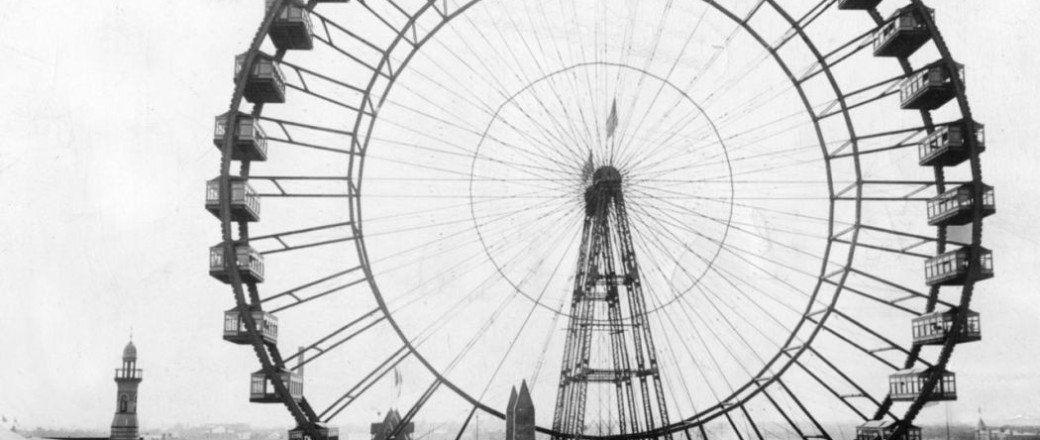The World’s Columbian Exposition was a World’s Fair held in Chicago in 1893 to celebrate the 400th anniversary of Christopher Columbus’s arrival in the New World in 1492. The Exposition was an influential social and cultural event and had a profound effect on architecture, sanitation, the arts, Chicago’s self-image, and American industrial optimism.
Most of the buildings of the fair were designed in the neoclassical style of architecture. The area at the Court of Honor was known as The White City. The buildings were clad in white stucco, which, in comparison to the tenements of Chicago, seemed illuminated.
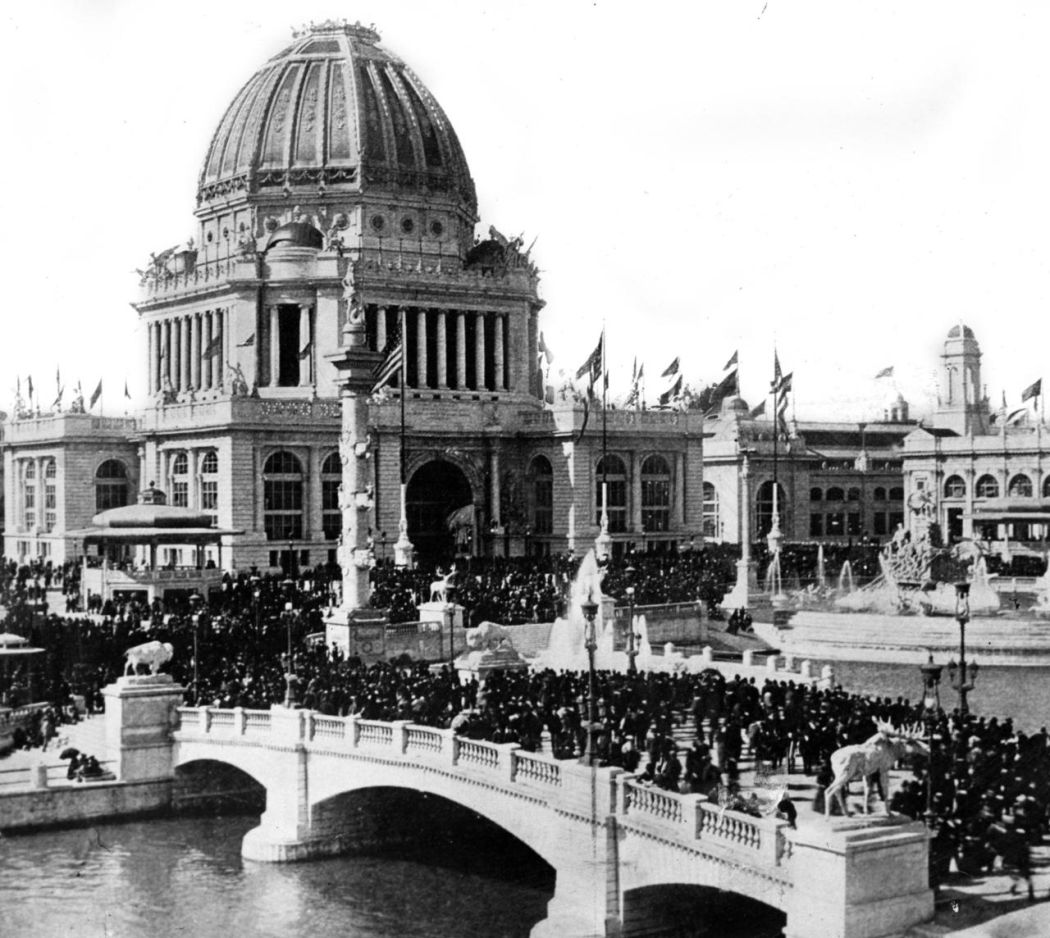
The Administration Building was a 55,000 square-foot dome that held the offices of fair organizers. It was the first building fair goers likely saw after they paid their 50-cent entrance fee. — Chicago Tribune historical photo
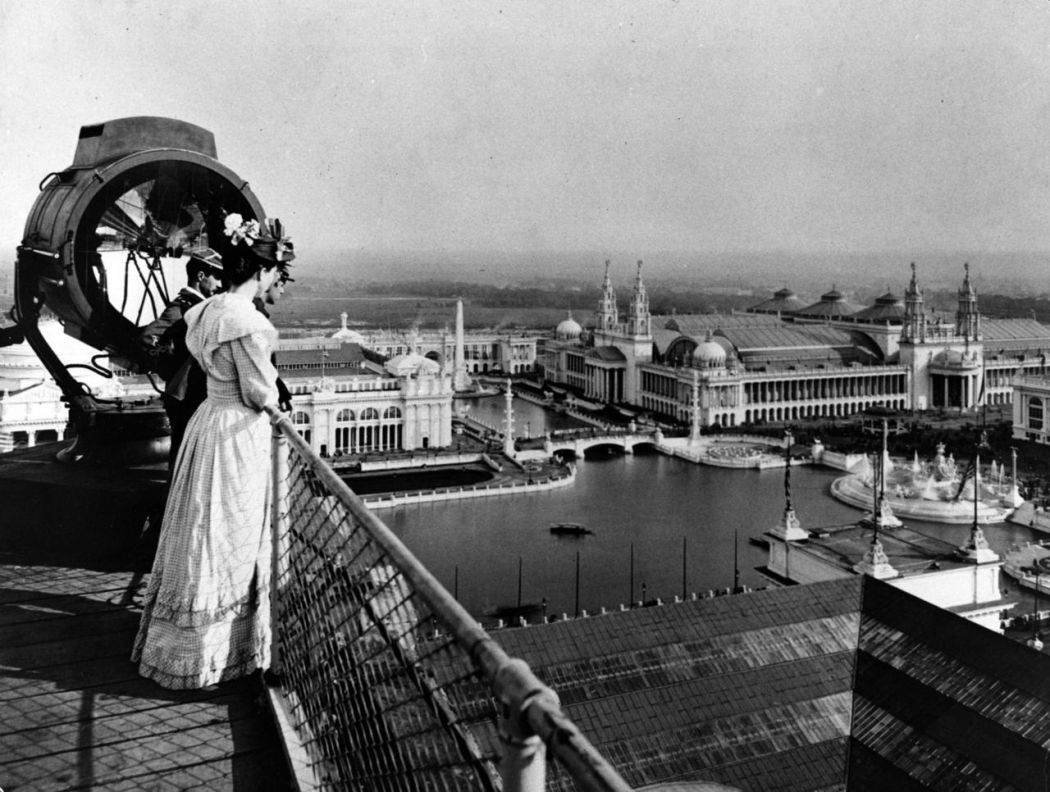
Visitors to the Columbian Exposition of 1893 took in the view of the Court of Honor from the roof of the Manufacturers Building. — Chicago Tribune historical photo
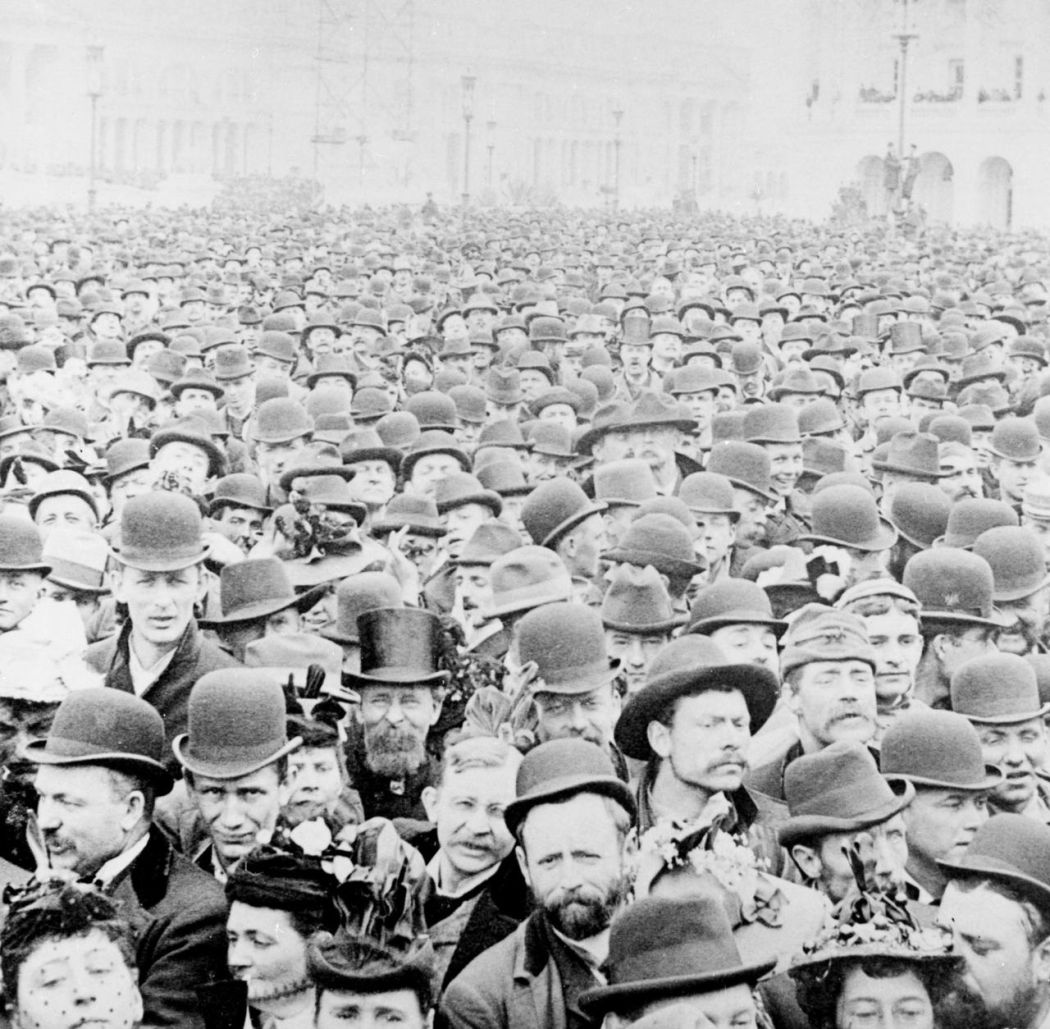
Nearly 129,000 people — “a surging sea of humanity,” as the title on this stereograph print describes it — filled the grounds on the opening day of the World’s Columbian Exposition, the most famous world’s fair in America. — Chicago History Museum
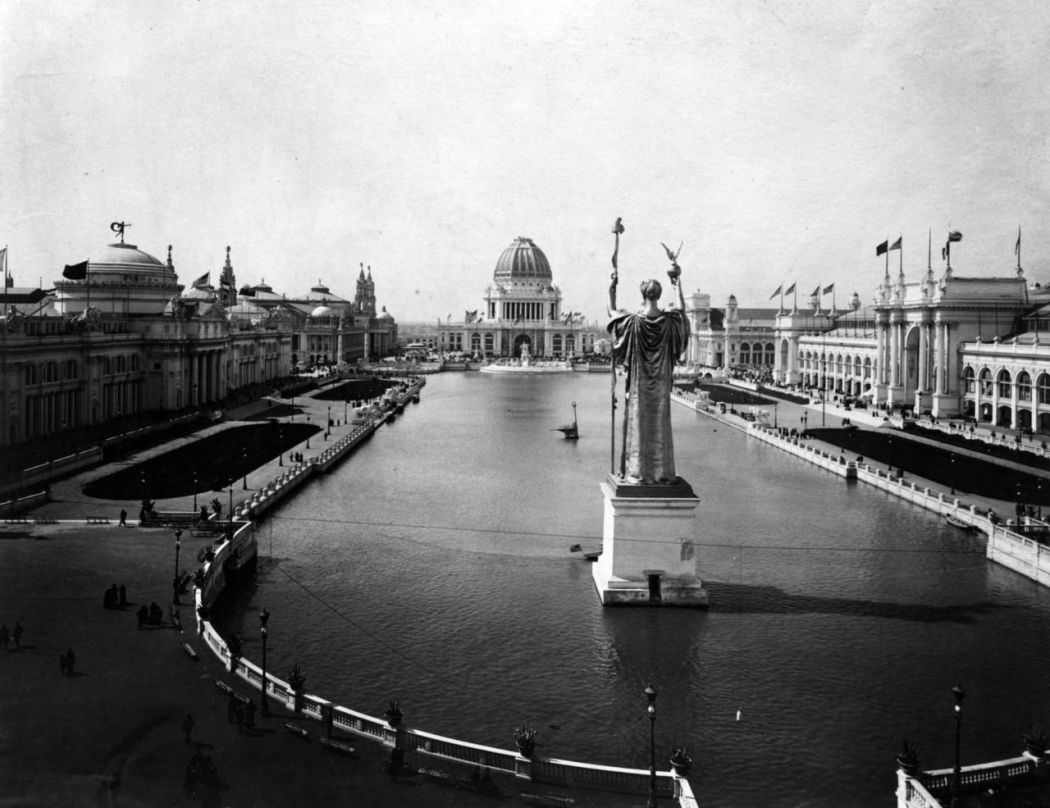
The Statue of the Republic stood across from the domed Administration Building at the Columbian Exposition. The original statue was 65-feet-tall and was destroyed in a fire. A replica was made in 1918 to commemorate the 25th anniversary of the World’s Columbian Exposition. The replica, only 24-feet-high and made of gilded bronze, resides in Jackson Park. — Chicago Tribune historical photo

Visitors to the Columbian Exposition of 1893 could take a gondola ride on the Venetian water as a way to cover some of the 633-acre expo and give the feet a rest. — Chicago Tribune historical photo
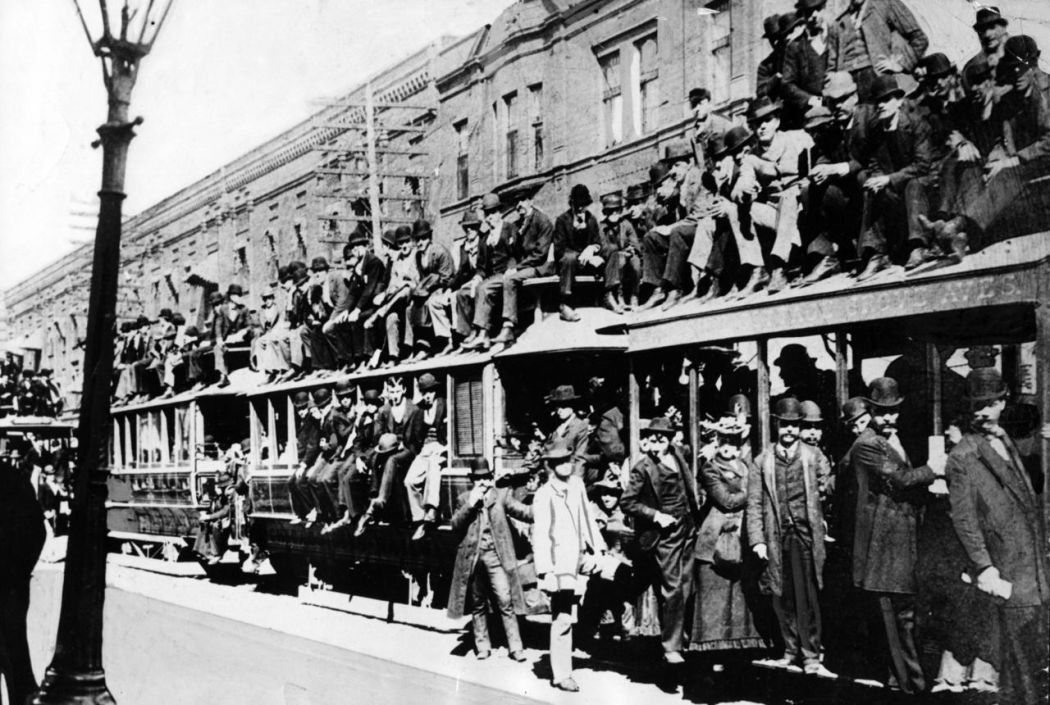
Columbian Exposition crowds were so huge at times that trains, like this one on Cottage Grove Ave., carried an overflow of passengers on the roofs of the cars. — Chicago Tribune historical photo
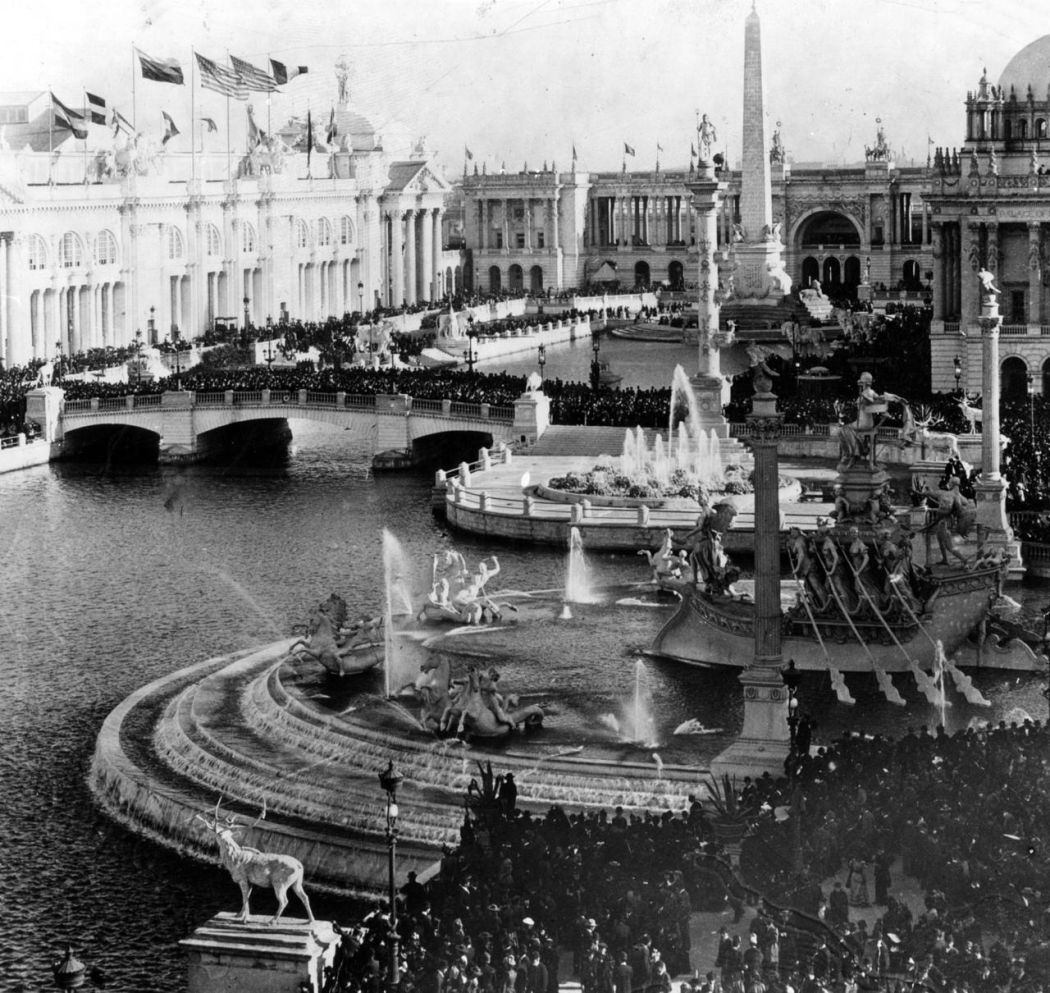
The center of the Columbian Exposition of 1893 was an architectural wonder known as the Court of Honor. It featured Venice-like water ways and a collection of stately palaces that served as exposition halls. The Palace of Fine Arts was the future home of the Museum of Science and Industry. — Chicago Tribune historical photo
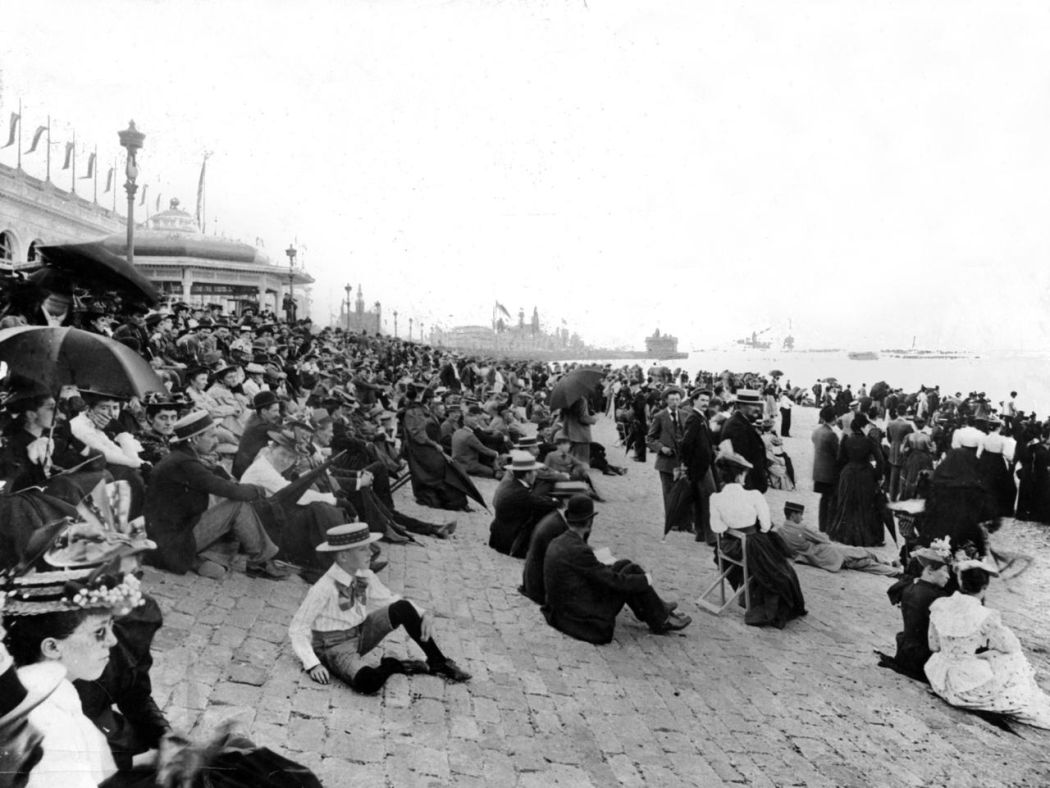
The exposition helped mark the 400th anniversary of Columbus’ supposed discovery of the New World and fair crowds lined the shores of Lake Michigan waiting for a replica of the Columbus caravels to arrive from Spain. — Chicago Tribune historical photo
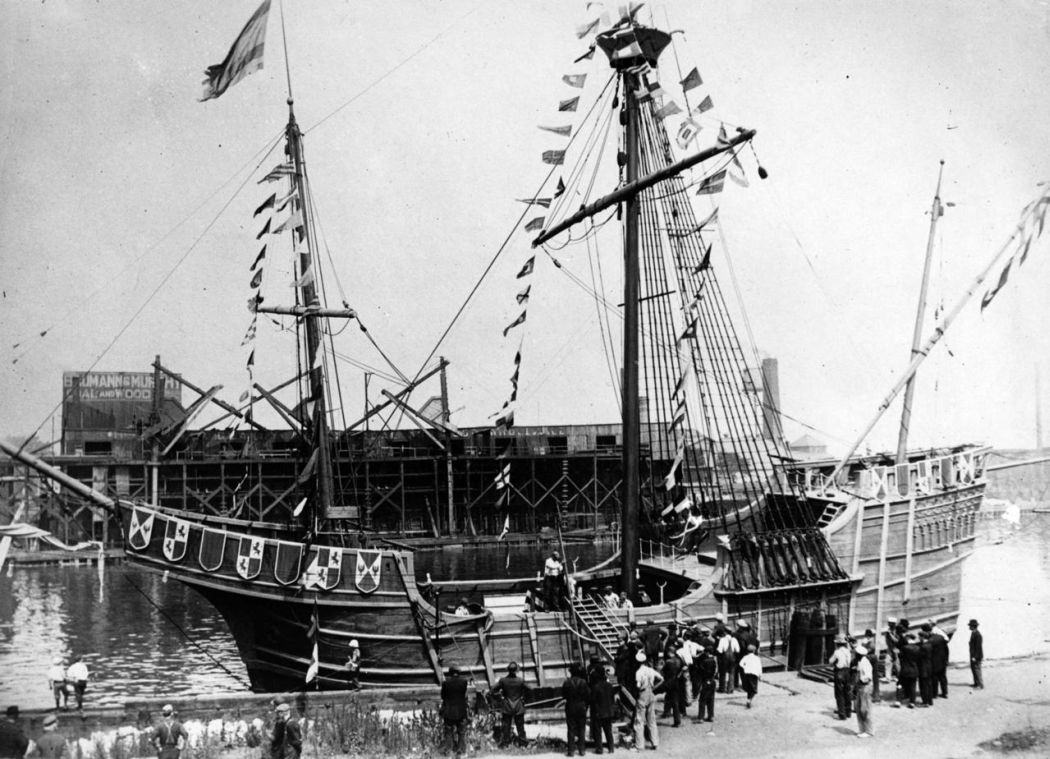
One of the replica Christopher Columbus ships that sailed from Spain for the World’s Columbian Exposition in 1893. — Chicago Tribune historical photo
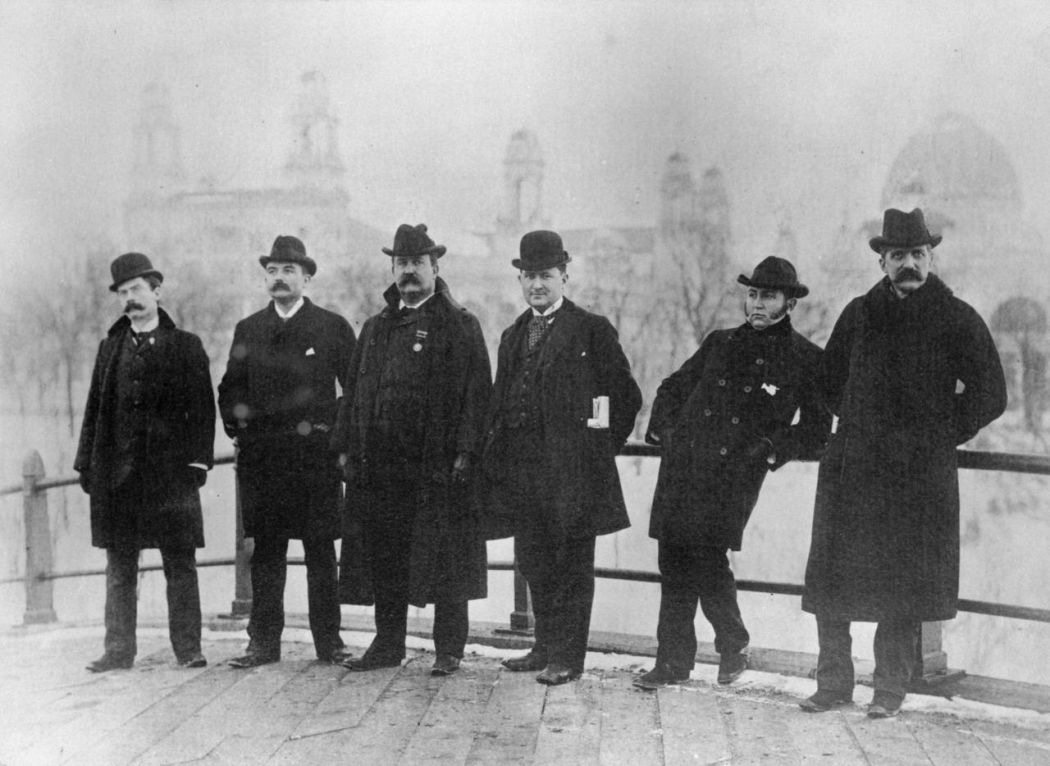
With fair buildings as the background, officials for the Chicago World’s Columbian Exposition of 1893 pose for a group portrait. The architect Daniel Burnham stands third from left. — Chicago History Museum

The Liberty Bell left its home in Philadelphia for only the second time in history to be part of the Columbian Exposition in 1893. The bell traveled aboard a flatbed rail car and was greeted with fanfare on stops between Philadelphia and Chicago. — Chicago Tribune historical photo
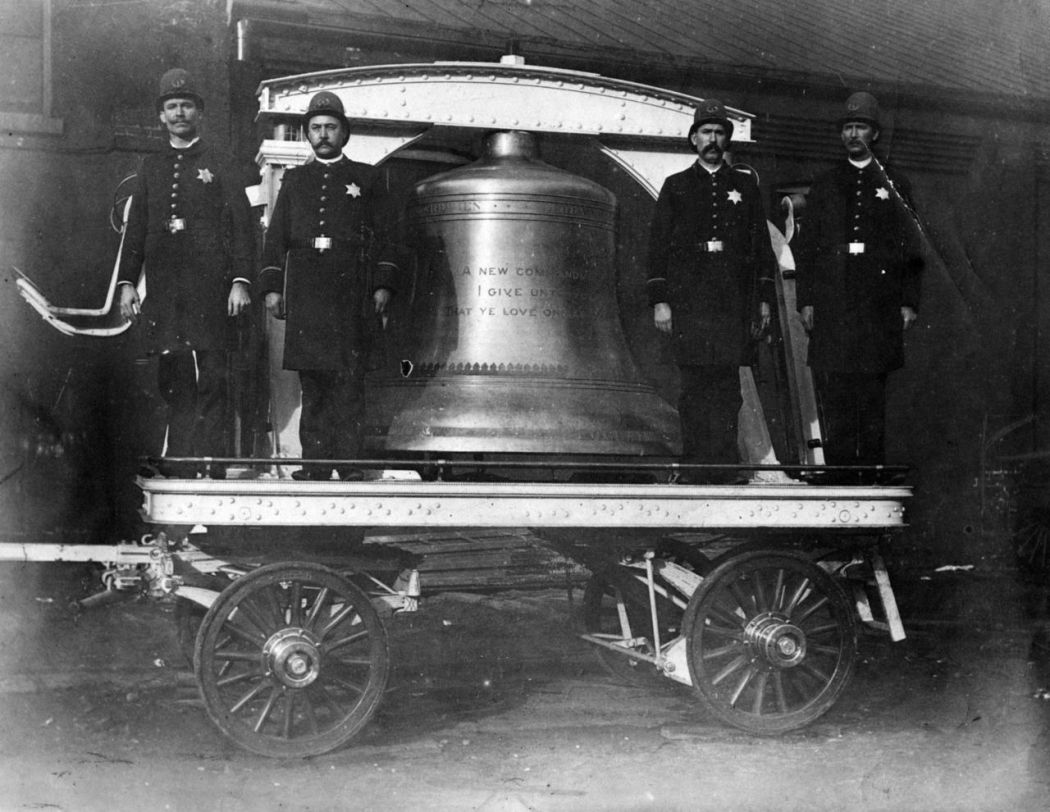
Chicago police guard the Liberty Bell, which was in town for the World’s Columbian Exposition in 1893. An extension of the bell’s famous crack was discovered while in Chicago and may have been caused while traveling by rail. — Chicago Tribune historical photo
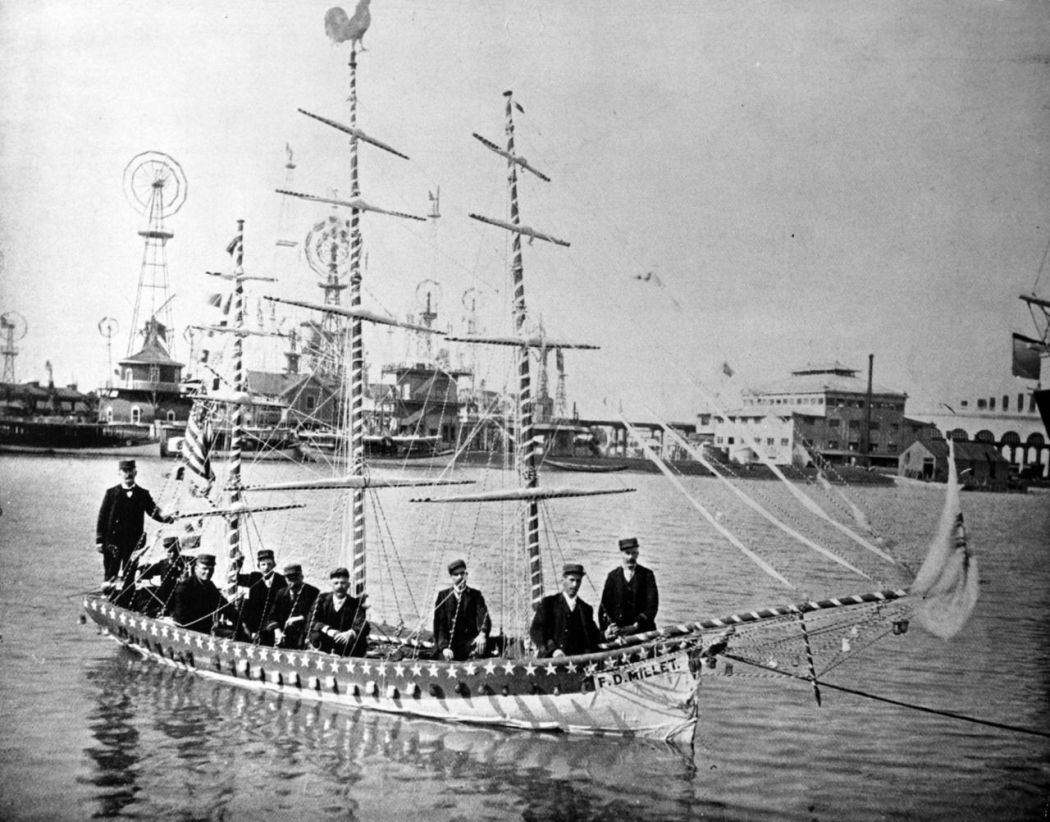
The Columbian Exposition had an emergency crew, pictured here on the boat F. D. Millet, that were skilled in swimming, climbing and trained to respond to any imaginable emergency. The crew rescued three men whose pyrotechnics raft had broke from its mooring in a storm. — Chicago Tribune historical photo
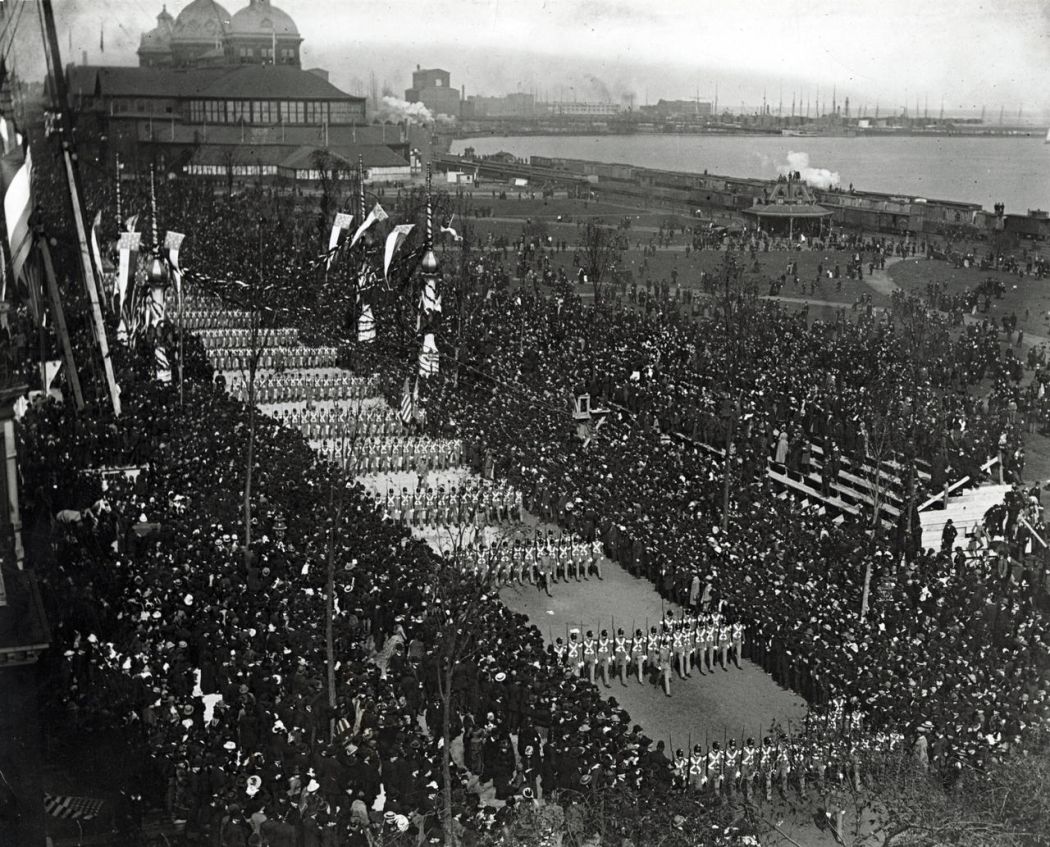
A parade during the World’s Columbian Exposition of 1893 in Chicago. — Chicago Tribune historical photo

At the center of the Columbian Exposition’s Court of Honor was the Statue of the Republic, designed by Daniel Chester French. A replica of this statue now stands in Jackson Park. — Chicago Tribune historical photo
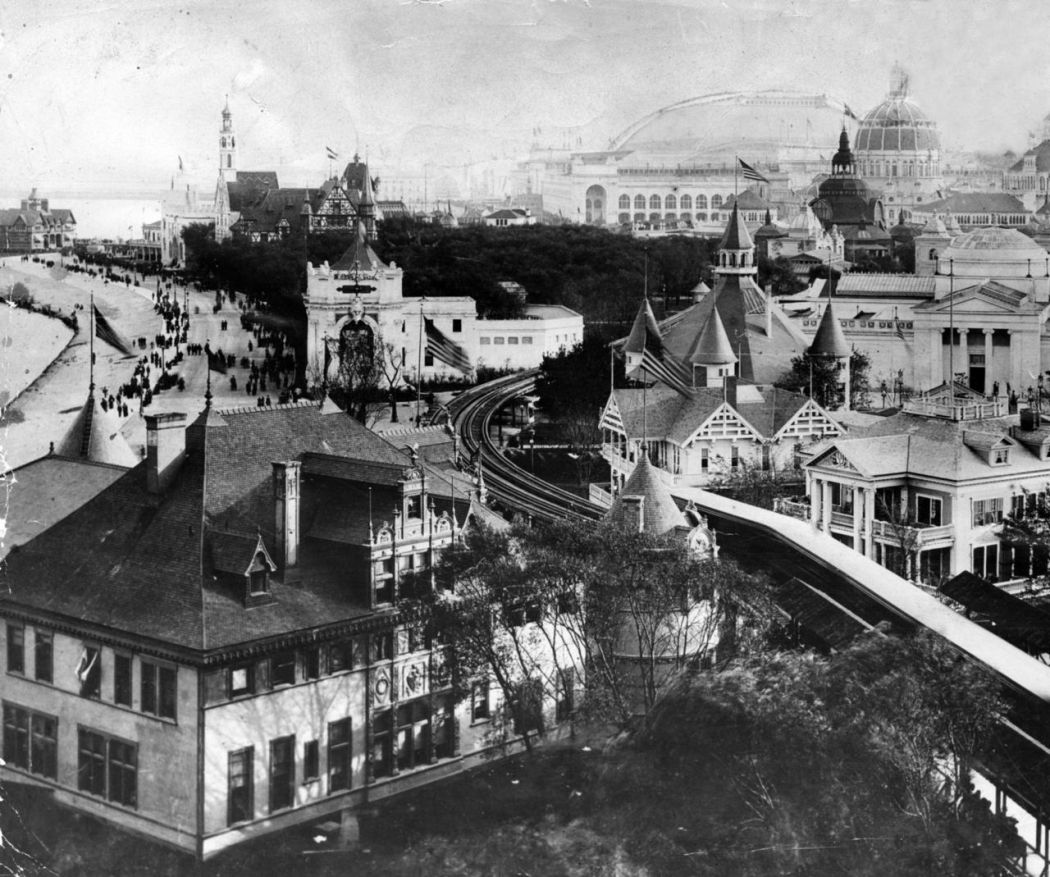
A view of Jackson Park with the German Building featured in the foreground surrounded by other Columbian Exposition landmarks in 1893. — Chicago Tribune historical photo

The first Ferris Wheel was built by George W. Ferris for the Columbian Exposition. It stood 250-feet-high and had 36 cars that could each carry 40 people. — Chicago Tribune historical photo
via Chicago Tribune

